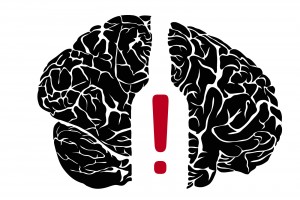I have blogged about coffee drinking several times in the past. Coffee consumption and health benefits have become a news item again because of yet another study. The recent media reports are based on a South Korean study that involved 25,138 men and women with a mean age of 41.3 years.
Here I like to concentrate on aspects regarding coffee consumption that are often lost in the media when studies regarding coffee consumption are discussed. I will break it down into points and then conclude at the end with my recommendations.
1. Calcification of coronary arteries and osteoporosis
The South Korean study published online on March 2, 2015 showed that with up to 4 cups of coffee there was a direct linear relationship between consumption of coffee and prevention of heart attacks. Coronary artery calcium (CAC) deposits were measured by a CAT scan as they are known to be a good measure for a future risk of heart attacks. Less than 1 cup of coffee per day resulted in a 23% reduction of CAC in the coronary arteries compared to controls without coffee consumption. 1 to 2 cups of coffee reduced CAC’s (meaning the risk of heart attack rates) by 34%, while 3 to 4 cups prevented CAC’s and thus heart attacks by 41%. The fun stops at 5 cups of coffee per day as only 19% of CAC’s (heart attacks) were saved. Clearly there is something in coffee that shows detrimental effects, if the dosage is too high.
In the past there was a question as to whether coffee consumption would lead to osteoporosis in women. However, a study showed that there was no correlation between coffee consumption and osteoporosis.
Other studies have clarified this and found that vitamin D3 and K2 are important to remove calcium from the arterial wall and transport calcium into the bone and deposit it there. Vitamin D3 and vitamin K2 seem to override all the other nutrients when it comes to osteoporosis prevention. The other factor in older women is hormone deficiency as they age necessitating bioidentical hormone replacement in addition to vitamin K2 and vitamin D3 to prevent osteoporosis.
2. Whether or not you put sugar into your coffee
is an important question. This is routinely done in Germany where I grew up. The addition of sugar changes the entire game plan, as it is sugar that oxidizes LDL cholesterol, which is directly deposited under the arterial walls. This is the root cause of hardening of the arteries. Coffee alone is beneficial; coffee with sugar is not. I use a tiny amount of KAL Stevia (which does not have the bitter aftertaste) instead of sugar to sweeten my coffee. This sweetens it to the equivalent taste of sugar, but without the detrimental oxidizing effect of sugar. Somebody like me who was conditioned to eat sugar from childhood on in Germany has been left with a “sweet tooth”; so I need to have this tiny bit of stevia as a crutch. Purists may disagree with me. Keep in mind that the Korean study was done without sugar.
3. What’s the difference between real and decaffeinated coffee?
The recent study showed that you need to drink the real thing (caffeinated coffee), if you want to reduce your risk to get the dreaded pigmented skin cancer, melanoma. Decaffeinated coffee did not have this melanoma protective effect. This points to the fact that there are several substances in real coffee and decaffeinated coffee that have different effects. Ref. 2 shows that there was a clear reduction in the risk of developing type 2 diabetes in people who drank either coffee, decaffeinated coffee or tea. Unfortunately many studies do not distinguish clearly between caffeinated coffee and decaf coffee.
4. Micronutrient components of coffee
As this link shows there are many micronutrient components in coffee such as caffeine, diterpenes, chlorogenic acids, and melanoidins. There is about 100 mg of caffeine contained in a tall (240 ml) Starbucks cup of coffee. This will stimulate the nervous system and your adrenal glands getting that energy rush.
Diterpenes consisting mainly of cafestol and kahweol are substances that have been found to increase the LDL cholesterol. The fact that we are dealing with a concoction of mostly beneficial, but also some less beneficial micronutrients in coffee is responsible for the lower beneficial effect of 5 cups of coffee mentioned in the South Korean study. Filtered coffee seems to largely remove these undesirable substances.
This link explains more details about the micronutrients in coffee.
5. Clinical conditions that are partially prevented by coffee consumption
The last link mentioned a study where a large group of people were followed and monitored for Parkinson’s disease. Those who had consumed only 1 cup of coffee per day were compared to controls without coffee consumption. This one cup of coffee per day prevented Parkinson’s disease by 40 to 60%. Similarly, in a study that investigated prevention of type 2 diabetes 4 to 6 cups of coffee per day prevented 28% of type 2 diabetes. In postmenopausal women decaf coffee was also significantly effective in reducing the risk to develop diabetes.
The Linus Pauling Institute link summarized that there were several studies that showed that colorectal cancer could be partially prevented by consuming real coffee (4 or more cups), which lowered the risk by 24% compared to non-coffee drinkers. Another study noticed that 1 to 2 cups per day of decaf coffee reduced the risk for colorectal cancer by 48%.
Cirrhosis of the liver, often due to excessive alcohol use can be prevented by 40% when at least 2 cups of coffee were consumed. More astounding than that is that the risk of death from liver cancer can be reduced by 50% when at least 1 cup of coffee was consumed compared to those who never consumed coffee.
However, liver and colon cancer are not the only ones that can be prevented to a large extent by drinking coffee. Breast cancer, prostate cancer, endometrial cancer, uterine cancer, oral cancer, brain cancer and lung cancer can also be significantly prevented by a regular cup of coffee. As there is a risk of increasing miscarriages in pregnant women, it is best not to consume coffee during pregnancy or at the most limit it to one cup per day. Also, nursing mothers should avoid coffee (even decaffeinated coffee) as caffeine gets transmitted into mother’s milk.
People with high blood pressure may be better off to not drink coffee or to drink decaf coffee, because caffeine has been shown to elevate blood pressure substantially.
6. What are the risks of drinking coffee?
Seeing that coffee is an effective drug-like compound with many benefits, it is worthwhile asking the question: what are the side effects of coffee consumption? There are people who are very sensitive to caffeine. They get over stimulated and experience heart palpitations, a lack of sleep and anxiety. They should refrain from coffee. They may even be over sensitive to decaffeinated coffee that still contains about 3% of caffeine. People with rheumatoid arthritis have been shown to deteriorate with coffee consumption, making this another subgroup of people who should stay away from coffee.
7. What is the process of decaffeinating coffee?
Essentially there are 4 processes of decaffeination that have been developed over time. As this link shows, all of the decaffeination processes are done with the green coffee beans. There are two solvent-based processes and two non-solvent based processes. The latter two are the healthiest: the Swiss water process and the carbon dioxide process. The problems with the older solvent-based processes are the chemicals used to extract the caffeine. They can be harmful to the body.
Organic decaffeinated coffees are manufactured with the environment-friendly Swiss water process.
Conclusion
There are some people who simply are too sensitive to caffeine. They should refrain from drinking coffee. Pregnant women and nursing mothers should either severely reduce coffee consumption to one cup per day or refrain from coffee altogether. Those with high blood pressure and rheumatoid arthritis patients better refrain from drinking coffee as well. The majority of us will benefit from coffee consumption, if this is your taste. You may prefer green tea or Oolong tea instead. As I explained above there is compelling evidence in the literature that many cancers, heart attacks, strokes and diabetes can be partially prevented by regular coffee consumption. Decaffeinated coffee can prevent type 2 diabetes to some extent and colorectal cancer as well. The majority of evidence shows that coffee drinking is healthy. So, go ahead and enjoy!
References:
Ref. 1: Ding, Ming; Bhupathiraju, Shilpa N; Satija, Ambika; van Dam, Rob M; Hu, Frank B. “Long-term coffee consumption and risk of cardiovascular disease: a systematic review and a dose-response meta-analysis of prospective cohort studies.” Circulation – February 11, 2014; 129 (6); 643-59.
Ref. 2: Huxley R, Lee CM, Barzi F, Timmermeister L, Czernichow S, Perkovic V, Grobbee DE, Batty D, Woodward M. “Coffee, decaffeinated coffee, and tea consumption in relation to incident type 2 diabetes mellitus: a systematic review with meta-analysis.” Arch. Intern. Med. – December 14, 2009; 169 (22); 2053-63







